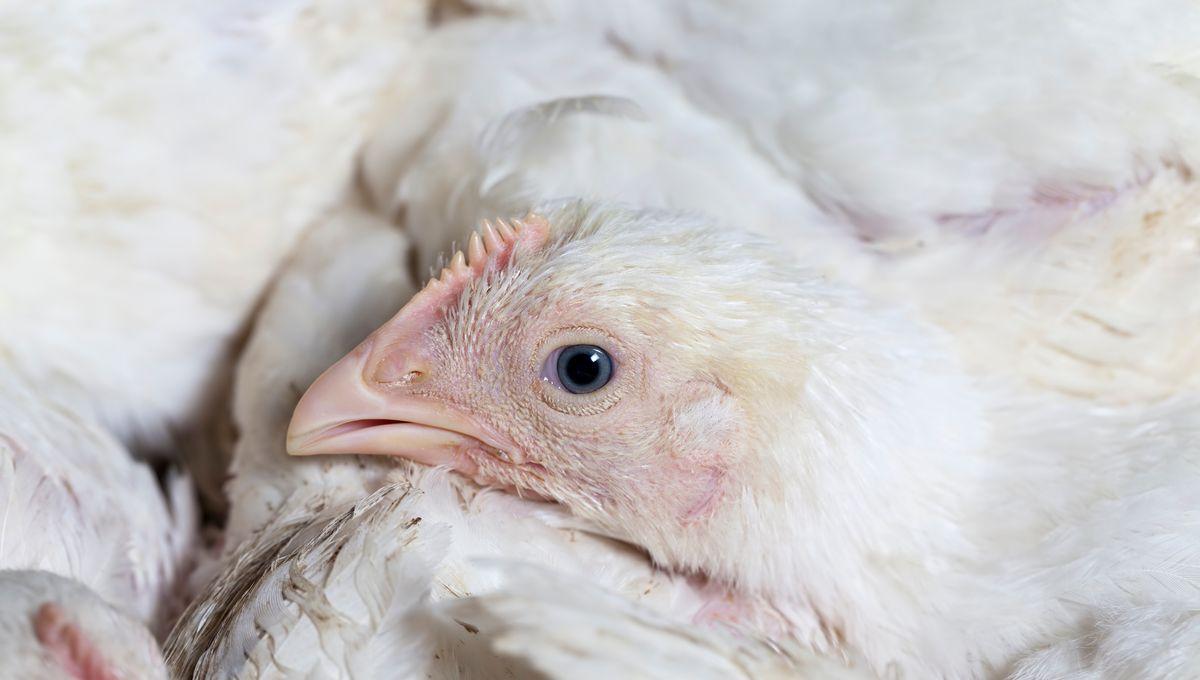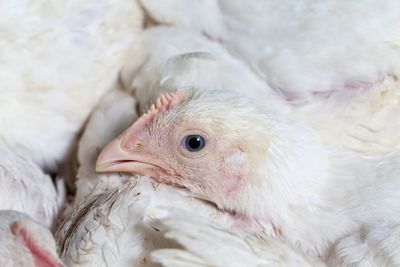The meat industry is, frankly, unfathomably cruel to hundreds of billions of animals every year. And most of us know that, even if only abstractly. But what, really, can the average consumer do about it? We don’t exactly have a section for animal welfare alongside the calorie count, and anything that comes with guarantees of high standards usually pairs it with an equally high price tag. Right?
The rest of this article is behind a paywall. Please sign in or subscribe to access the full content. Well, no. Not according to a new study, at least, which evaluates the costs and effects of a 2016 European initiative designed to improve the welfare of broiler chickens. In fact, it finds that it costs as little as one-hundredth of a cent to prevent one hour of chicken pain – and it benefits the environment to boot. So, what’s the secret? If you thought humans were an impressive species in terms of sheer number, prepare yourself. As numerous as we may be, we’ve nothing on the mighty chicken, of whom there were about 76 billion raised and slaughtered in 2023. In the seven or so weeks – yes, weeks – between their birth and death, those birds aren’t having a great time. In the US, 99.96 percent of chickens are factory farmed, meaning they're packed into warehouses so tightly that they can barely move. Cleaning a place like that is a non-starter, so it’s filled with the stench of chicken poop, and when they can walk around, they do so through their own filth. There’s no fresh air or grass; no sky or sunlight; even farms that boast “free-range” birds might be taking advantage of loopholes in lax USDA laws to exaggerate what is, in reality, a small, paved patch of the outdoors that can host maybe a dozen of the birds at once. Throughout all of that, the birds are undergoing physiological changes that cast even the worst puberty in a fresh light. Chickens today are about five times heavier than they were in the 1950s, but they’re given the same amount of time to grow into it. The result is a life of chronic pain and health problems severe enough that something like one in ten die from organ failure before even reaching their predetermined seven-week life expectancy. Their legs often can’t support their own bodies, making movement impossible; their bellies fill with fluid thanks to an overdemand of oxygen from their too-fast muscle growth; their breast tissue necrotizes even as it continues to increase in size. Their entire existence is, essentially, spent forcibly stationary, in pain, surrounded by their own shit and thousands of others in equally dire situations. And, frankly, those are the lucky ones. The chickens that live longer than seven weeks – the mothers of the farm – have all that plus a starvation diet, forced onto them to counteract their fast-growth and weight-gain genes so they survive long enough to reproduce on an industrial scale. “Few people are aware that the pain and distress behind chicken meat production begins even before a chick is born – with the life of their mother,” said Cynthia Schuck-Paim, Scientific Director of the Welfare Footprint Institute and lead author of the new study, in a statement this week. “To meaningfully improve welfare in meat chicken production, we need genetic changes,” she argued. “Without them, mother hens must continue to endure extreme hunger to avoid the health problems caused by rapid growth.” All this is uncomfortable reading, to say the least. But what can be done about it? Enter the BCC – the Better Chicken Commitment. Informed by more than 150 independent scientific studies, this is a six-point policy designed to improve chicken welfare and, in turn, food safety and sustainability. “The cost of cheap chicken is paid for with the suffering of fast-growing birds on a mass scale,” argues the EU Broiler Chicken Welfare White Paper, which outlines the science behind the policy. The birds “liv[e] in large and cramped sheds lacking in environmental stimulation, and experienc[e] poor slaughter practices,” it says, and live with “[an] extensive list of diseases these birds are becoming increasingly predisposed to suffering.” “However, there is an alternative,” it says. “Breeds exist that can alleviate many of the negative predispositions we see with the current typical fast-growing breeds.” “By utilizing these higher welfare breeds and giving birds more space, enriching the environment, and improving slaughter conditions […] we would see an improvement in the level of welfare for the billions of chickens farmed for meat production every year.” So, in short: avoid these hyper-fast-growing breeds; give the birds more space and natural light; give them straw and string to peck at. When you kill them, try to make sure they don’t suffer more than they have to. It’s not a lot to ask for – but as the new study has revealed, it makes a huge difference overall. How can we measure the welfare impact of policies like the BCC? Isn’t it all a bit too… abstract? Well, not really: after all, we already know how to quantify, say, the carbon footprint of a kilogram of meat. Why can’t we apply that same framework to the animal’s wellbeing? In fact, we can – and that’s exactly what the new study set out to do, using the Welfare Footprint Institute’s own framework to measure chicken welfare. Developed by Schuck-Paim and fellow co-author Wladimir Alonso, this balances out the intensity and duration of all negative and positive experiences to come up with a result measured in pain (or pleasure) per unit of animal product. “These are not abstract values,” said Kate Hartcher, Senior Researcher at the Welfare Footprint Institute and study co-author. “They allow us to put animal welfare on the same footing as other policy priorities.” So, how did the European birds fare? The answer is… much better than their non-BCC peers. Farming slower-growing breeds rather than the standard seven-week supersizers can prevent 15 to 100 hours of intense pain for each bird, the study found, and at a cost of only a single US dollar per kilogram of meat – that’s about 45 cents per pound, to avoid mixing US units and metric. That’s a lot of chicken welfare for your buck. “When you compare the cost of avoiding intense pain to the cost of other externalities, the numbers speak for themselves,” Hartcher said. While it’ll take a whole lot to reduce humanity’s ever-increasing hunger for the domestic chicken, the authors hope that their analysis can at least catalyze a change in how we think about the birds’ lives. By “enabling animal welfare impacts to be understood and compared in common and easy-to-understand units,” the researchers say, “the Welfare Footprint Framework makes it possible to drive meaningful reforms and ensure animals are no longer left out of the conversation.” The study is published in the journal Nature Food.140,000 chickens per minute
The European option
Pain by the pound




